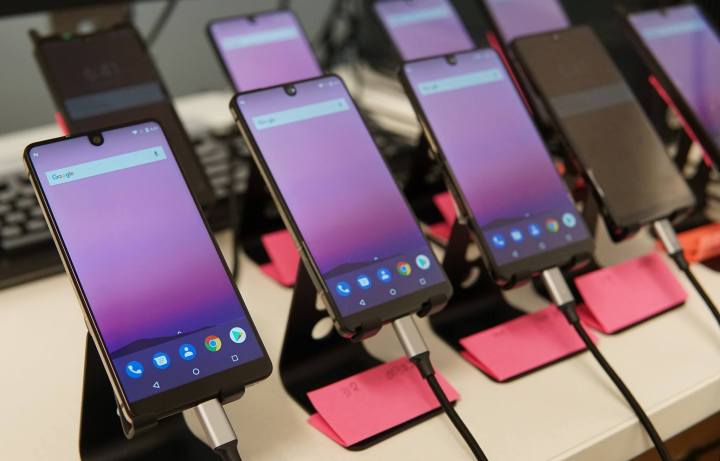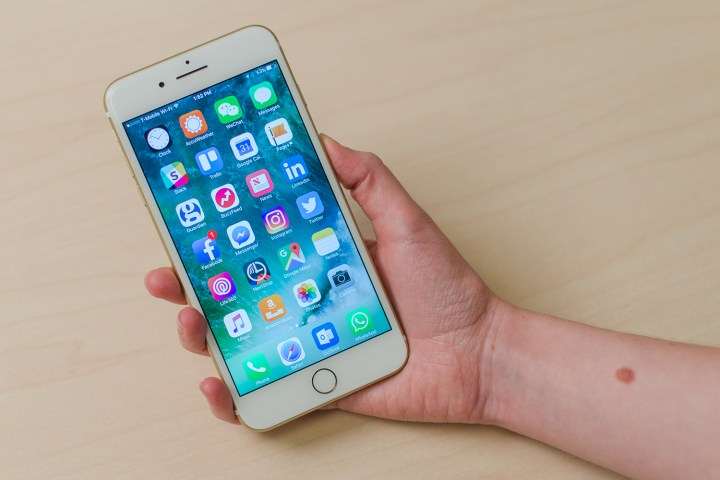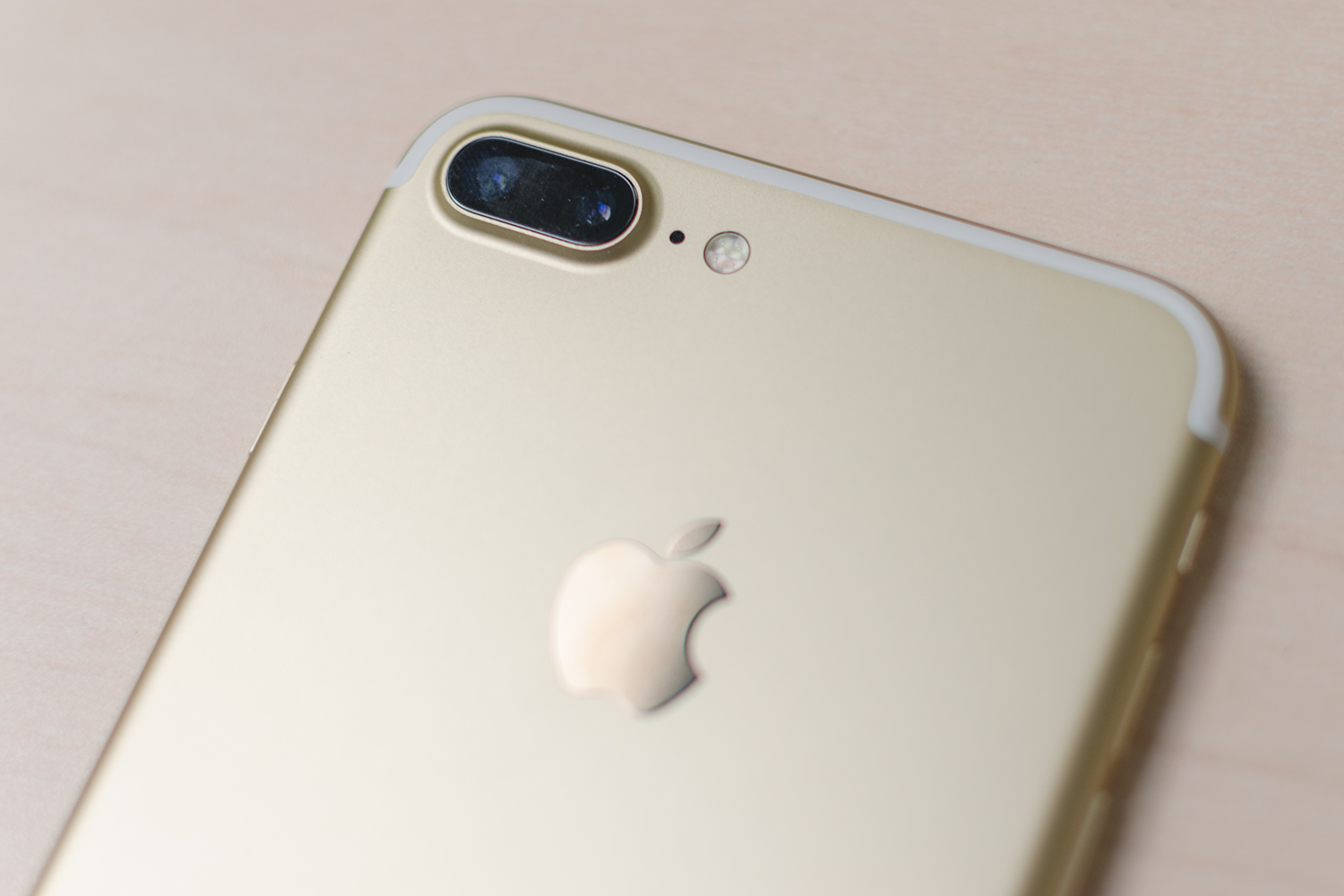
The Essential PH-1 isn’t the only great phone around. While Apple may use similar design elements for its next phone, the company still has a capable phone already on the market: The iPhone 7 Plus. But just how do the two phones compare? We put them head to head to find out.
Specs
| Essential PH-1
|
iPhone 7 Plus
|
|
| Size | 141.5 x 71.1 x 7.8 mm (5.57 x 2.80 x 0.31 inches) | 158.2 x 77.9 x 7.3 mm (6.23 x 3.07 x 0.29 inches) |
| Weight | 6.53 ounces (185 grams) | 6.63 ounces (188 grams) |
| Screen | 5.71-inch LCD | 5.5-inch LED |
| Resolution | 2,560 x 1,312 pixels (504 ppi) | 1,920 x 1,080 pixels (401 ppi) |
| OS | Android 7.1.1 Nougat | iOS 10 |
| Storage | 128GB | 32, 128, 256GB |
| MicroSD card slot | No | No |
| NFC support | Yes | Yes |
| Processor | Qualcomm Snapdragon 835 | A10 Fusion with 64-bit architecture, M10 motion coprocessor |
| RAM | 4GB | 3GB |
| Connectivity | GSM, CDMA, HSPA, EVDO, LTE | 4G LTE, GSM, CDMA, HSPA+, 802.11a/b/g/n/ac Wi-Fi |
| Camera | Dual 13 MP rear, 8MP front | Dual 12MP rear, 7MP front |
| Video | 4K at 30fps, 1080p at 60fps, 720p at 120fps | 4K at 30fps, 1080p at 30 or 60fps |
| Bluetooth | Yes, version 5.0 | Yes, version 4.2 |
| Fingerprint sensor | Yes | Touch ID |
| Other sensors | Accelerometer, gyroscope, proximity, compass, barometer | Barometer, 3-axis gyro, accelerometer, proximity sensor, ambient light sensor |
| Water resistant | No | Yes, IP67 rated |
| Battery | 3,040mAh | 2,900mAh, up to 13 hours of internet use on LTE |
| Charging port | USB-C | Lightning |
| Marketplace | Google Play Store | Apple App Store |
| Colors | Stellar Gray, Ocean Depths, Black Moon, Pure White | Gold, rose gold, silver, black, jet black |
| Availability | Unlocked, Sprint | AT&T, Verizon, Sprint, T-Mobile |
| Price | $749 | $729 |
| DT review | Coming soon | 4 out of 5 stars |
The Essential Phone makes use of the latest and greatest Qualcomm Snapdragon 835 processor, and it’s coupled with 4GB of RAM. The iPhone 7 Plus, on the other hand, uses Apple’s self-designed A10 Fusion chip, along with 3GB of RAM.
Apple’s processor is incredibly powerful, and iOS doesn’t require a lot of RAM compared to Android — it’s just a difference between the two operating systems. The iPhone 7 Plus will prove to be an extremely smooth device. In fact, when it comes to benchmarks, the Essential PH-1 scored 161,746 on AnTuTu, while the Apple iPhone 7 Plus scored a hefty 181,807 — putting the Essential PH-1 to shame. That’s not to say you shouldn’t get the Essential PH-1. It has the same processor as phones like the Samsung Galaxy S8 and the HTC U11. It’s a high-performing phone, and will last you at least a few years of use. Benchmarks aren’t the best indicator of real-world use.
If you’re looking for a lot of storage, both phones have a lot to offer. Neither have a MicroSD card slot, but the iPhone 7 Plus has options for 32GB, 128GB, and 256GB of storage, while the Essential Phone comes only with 128GB of storage.
Both of these phones will perform well, but the iPhone 7 Plus is technically the better performer.
Winner: Apple iPhone 7 Plus
Design, display, and durability

Both of these phones feature beautiful designs, but in very different ways.
For starters, the Essential PH-1 boasts a beautiful 5.71-inch edge-to-edge display, which covers almost the entire front of the phone save for a small notch at the top and a chin at the bottom. The back of the phone is shiny and minimal. You’ll find a fingerprint sensor here, below a dual-camera module and a few other sensors.
The iPhone 7 Plus is also well-designed, though a little less groundbreaking than the Essential Phone. On the front, the 5.5-inch display sits above Apple’s Touch ID fingerprint sensor and home button. The design does look a little dated thanks to the chunky edges surrounding the screen. The rear is minimal like the Essential Phone, with the iconic Apple logo and a dual-camera module above.
Things are a little different when it comes to the display — the Essential Phone is the clear winner. Despite an LCD screen, you get a 2,560 x 1,312 pixel resolution, which is quite a bit more than the 1,920 x 1,080 pixel resolution on the Apple iPhone 7 Plus. You also get more screen in a smaller, lighter package with the Essential Phone.
But the iPhone takes the crown for durability, as it has a waterproof rating of IP67, meaning you can take it up to 1 meter underwater for 30 minutes. The Essential Phone isn’t waterproof.
Still, the Essential Phone features a more modern design, along with a higher resolution display. It takes the win here.
Winner: Essential PH-1
Battery life and charging

The battery on the iPhone 7 Plus sits in at 2,900mAh, while the Essential PH-1 offers a 3,040mAh battery. That doesn’t necessarily mean that the PH-1 will last longer — the device has a much higher-resolution display, which means that it will be much more taxing on the battery. Still, early reviews suggest the PH-1 has pretty decent battery life. We’ll do more testing to confirm.
While the Essential Phone offers fast-charging, the Apple iPhone 7 Plus does not. Because of that, at least on paper, the Essential PH-1 is the winner here.
Winner: Essential PH-1
Camera

The two phones have dual-camera setups, but they have slightly different specifications. The iPhone 7 Plus offers a dual 12-megapixel sensor with an f/1.8 aperture and optical image stabilization on the primary lens, and the PH-1 has a dual 13-megapixel sensor with an f/1.9 aperture.
Apple has long been known for offering an excellent camera on its devices, and the iPhone 7 Plus is no different. In our review, we hailed the dual-camera setup especially the benefit of having a 2x optical zoom. Apple also introduced Portrait Mode a few months later via a software update, and it offers DSLR-like quality portrait images.
Some early reviews suggest the Essential PH-1’s camera could be just as good. The device’s dual-cameras feature a monochrome and a color sensor. The camera doesn’t feature some of the dual-sensor features found on the iPhone, like Portrait Mode or HDR.
The iPhone’s camera is tried and true. While some early reviews say that the PH-1’s camera is great, others don’t quite agree.
Winner: Apple iPhone 7 Plus
Software

Before we talk about software, we’ll say one thing — we’re not going to award a winner here. The Android vs iPhone debate is a long-running one, and everyone has their own preference.
Still, we can note some major differences between the two operating systems. Android is generally known to offer more customization, while iOS is easier to use. Essential offers a pure Android experience, similar to what you will find on the Google Pixel. It’s free of bloatware, unlike some Android devices.
Winner: Tie
Price and availability
The Essential PH-1 is available for purchase, and you can get your hands on it through the Essential website, Sprint or Best Buy. It doesn’t seem as though other carriers are offering the phone, and there’s no word yet on whether they will or not. We recommend buying the phone unlocked straight from Essential. The device cost $700, which is a premium price to pay for a phone.
The Apple iPhone 7 Plus is slightly more expensive, though it’s available more widely. It costs $770 for the 32GB version, and you can get it from all four major carriers, unlocked from the Apple website, Amazon, Best Buy, and so on.
Winner: Essential PH-1
Overall winner: Essential PH-1
Both the Essential PH-1 and Apple iPhone 7 Plus are excellent phones, but the Essential’s gorgeous edge-to-edge design and slightly lower price gives it the win here. The iPhone is technically more powerful and seems to offer a slightly better camera, but the PH-1 likely has a better battery and can charge back up quickly.





